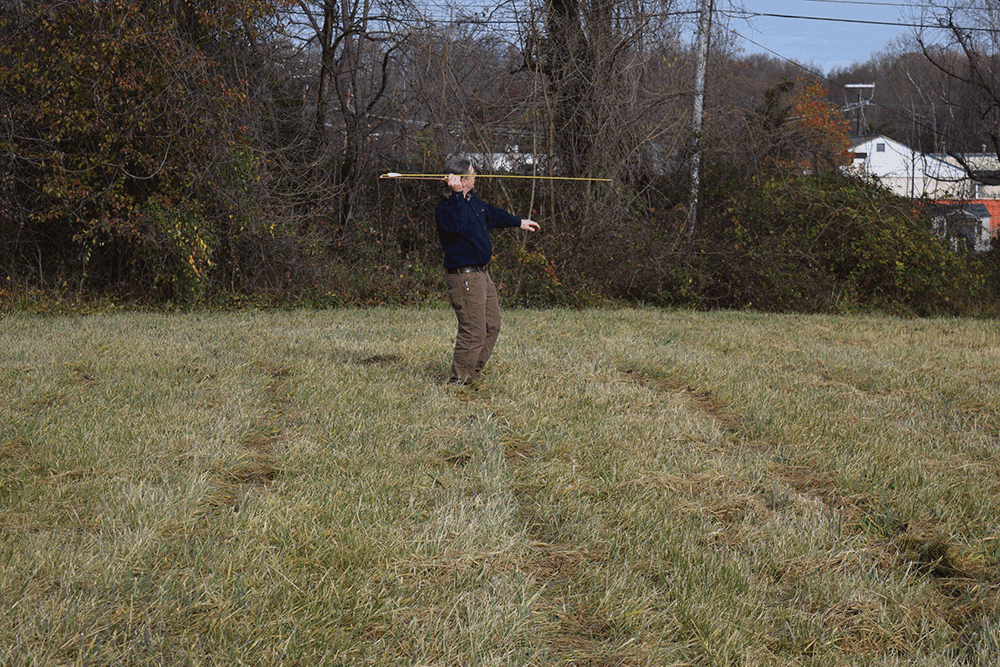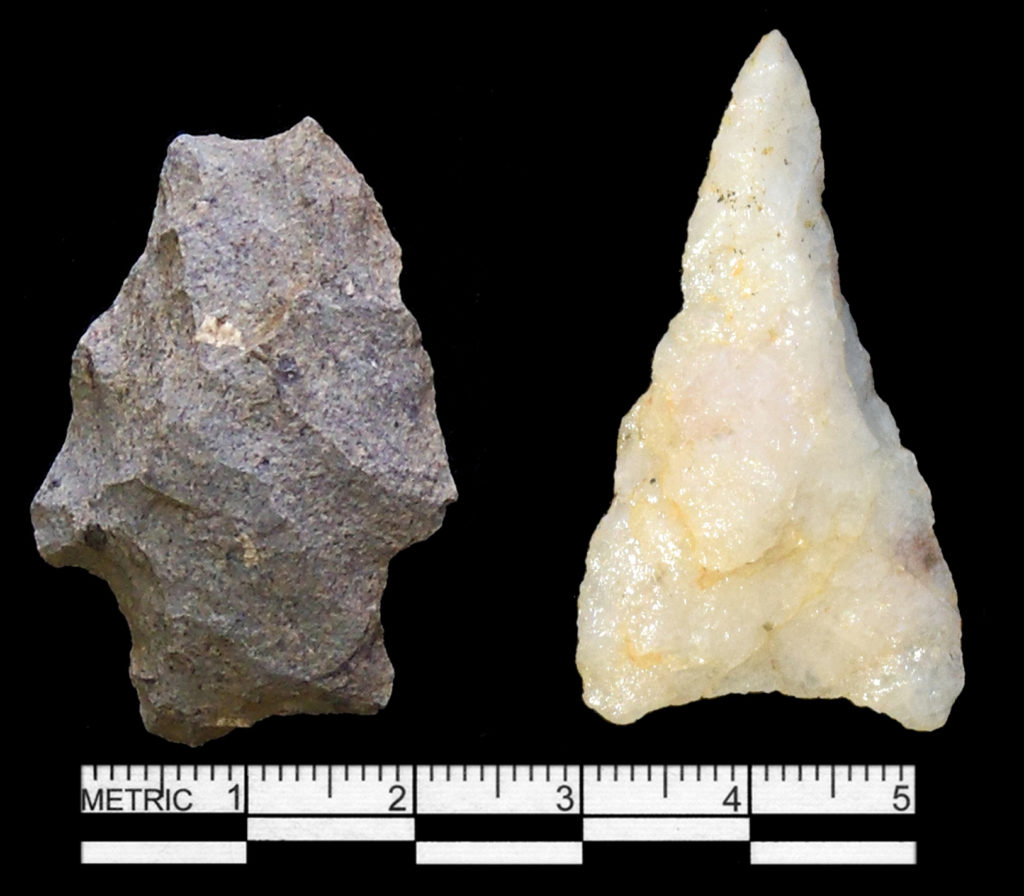Featured Fragment – Arrowheads, Spear Points, and Knives
By Joe Blondino
When you think of Native American artifacts, one of the first things that probably come to mind are arrowheads. But did you know that most of the artifacts that people call “arrowheads” were not actually used on arrows? Although eastern North America has been occupied for over 13,000 years, the bow and arrow was not introduced into our region until the last 1,500 years or so. The “arrowheads” from before that time are more likely spear points, knives, or tips for atlatl (spearthrower) darts. Because it is often difficult to tell exactly what these artifacts were used for, archaeologists often refer to them as projectile points, PP/Ks (projectile point/knives), or simply as “points.” Many of these tools were probably multipurpose, serving as projectile points, knives, or whatever other kind of edged tool that was needed at the time. They were even re-sharpened like modern tools, and sometimes their use would change as they got smaller and smaller after repeated re-sharpening.

Using an atlatl. The atlatl (pronounced ”at-lattle”) essentially acts as an extension of the arm. In physics terms, this makes a longer lever, which makes it possible to apply greater force to the spear or dart. The atlatl basically pushes the butt of the spear or dart with more force than could be applied with the arm alone, thus making it go farther and faster.

An atlatl. The butt of the spear or dart would rest against the spur at the end of the atlatl. These spurs could be made of wood, stone, or bone, or carved into the atlatl itself.
So how do we know when we can use the term “arrowhead” properly? Fortunately, it is pretty simple! Prior to the introduction of the bow and arrow, most projectile points and knives had some form of stem or notching around the base. Archaeologists refer to this as the “hafting element” because it is what allows the point to be attached firmly to a spear shaft or knife handle. However, these hafting elements make the points too big and heavy to make good arrowheads. As a result, true arrowheads are triangular and relatively small—less than 2 inches long. The base of the triangle is often thin and concave (angled in) so that it can be inserted into a thin notch in the arrow shaft, but there is no stem or outward notch on the arrowhead itself. These triangular points are an indication of the use of the bow and arrow, and along with certain types of pottery, are one of the hallmarks of the Late Woodland Period (circa A.D. 900–1600). True arrowheads aren’t as common as you might expect them to be. If you think about it, though, it makes perfect sense—people only used them for about the last 1,500 years as opposed to the thousands of years before that when Native Americans were using the stemmed and notched points and knives that most people are used to seeing. As a result, there are a lot more stemmed and notched points in the archaeological record simply because they were used for a much longer time. So next time you see an “arrowhead,” try to figure out if it really would have been used on an arrow and, if not, think about all the other things it could have been used for!

A stemmed point (left) and a triangular point (right). The stemmed base of the point on the left would have facilitated hafting to a handle or spear shaft. Once attached, it could have been used as a projectile point or as a knife. The triangular point on the right is a true arrowhead. Its thin tip was ideal for penetrating the flesh of an animal, but wouldn’t have made a very good knife.
Any distributions of blog content, including text or images, should reference this blog in full citation. Data contained herein is the property of Dovetail Cultural Resource Group and its affiliates.
